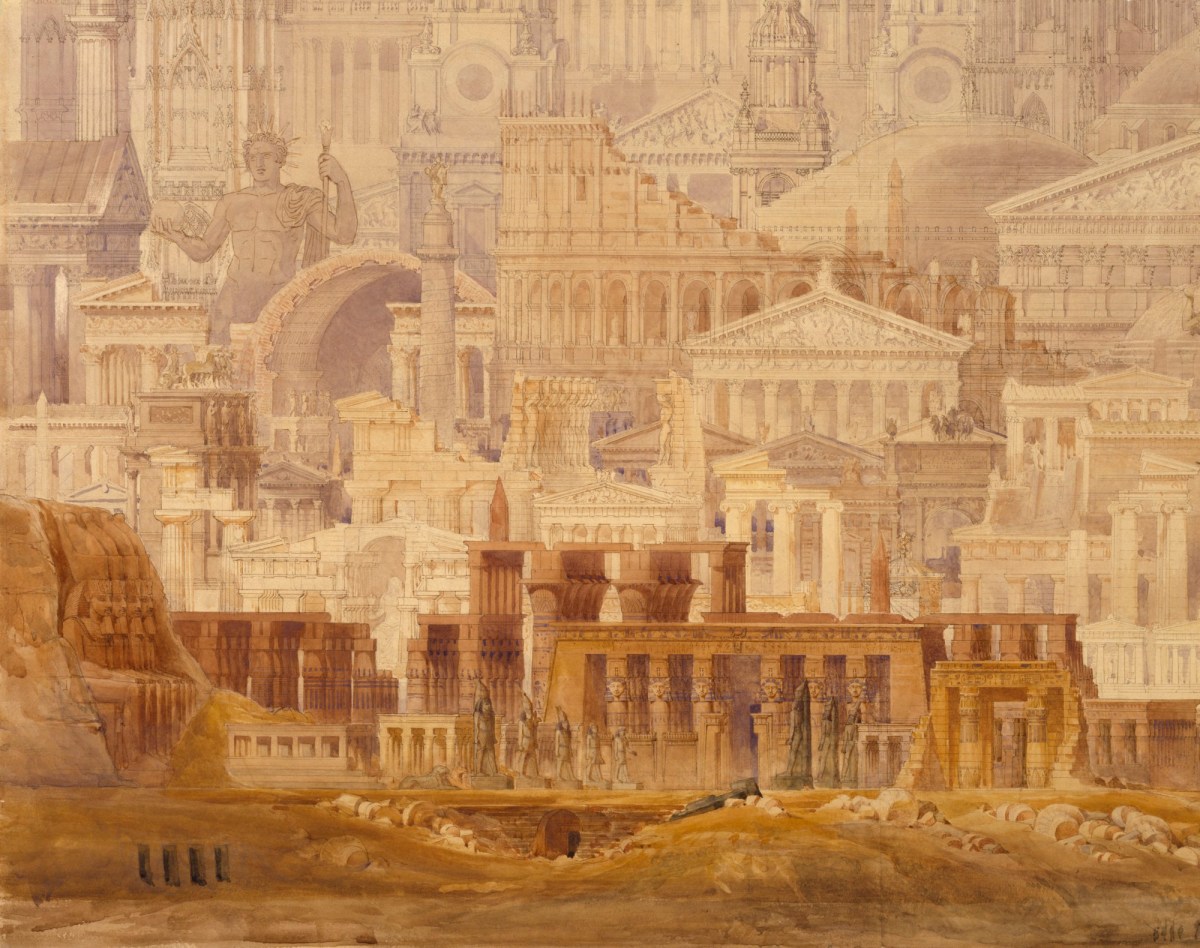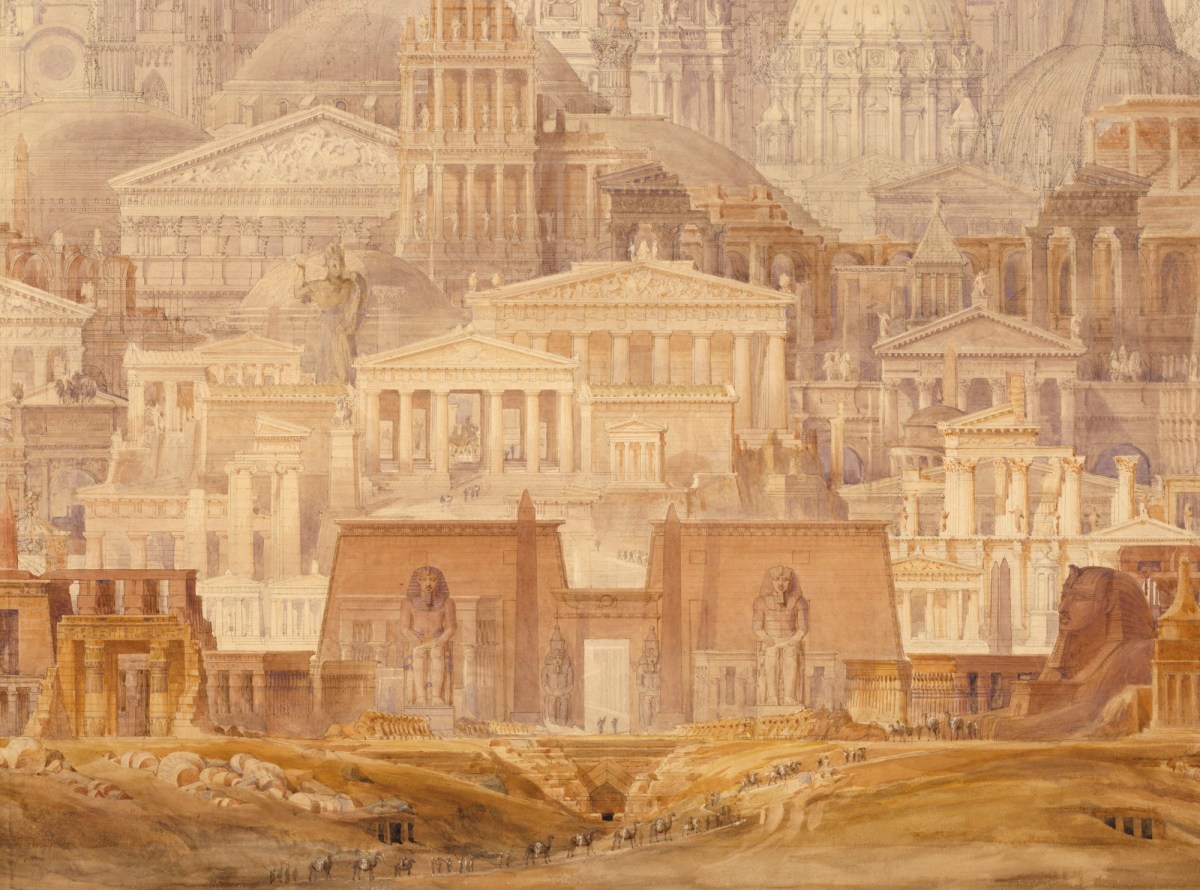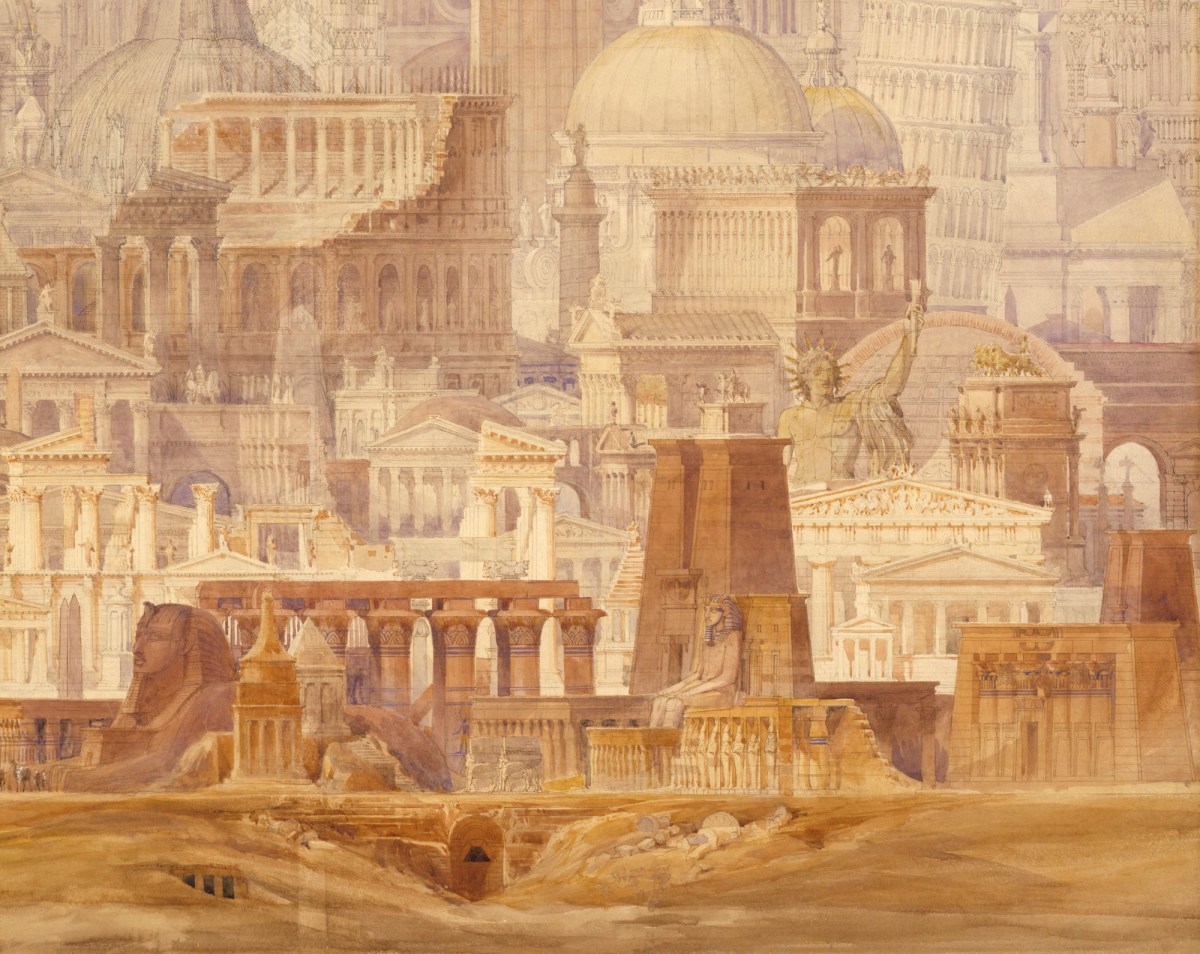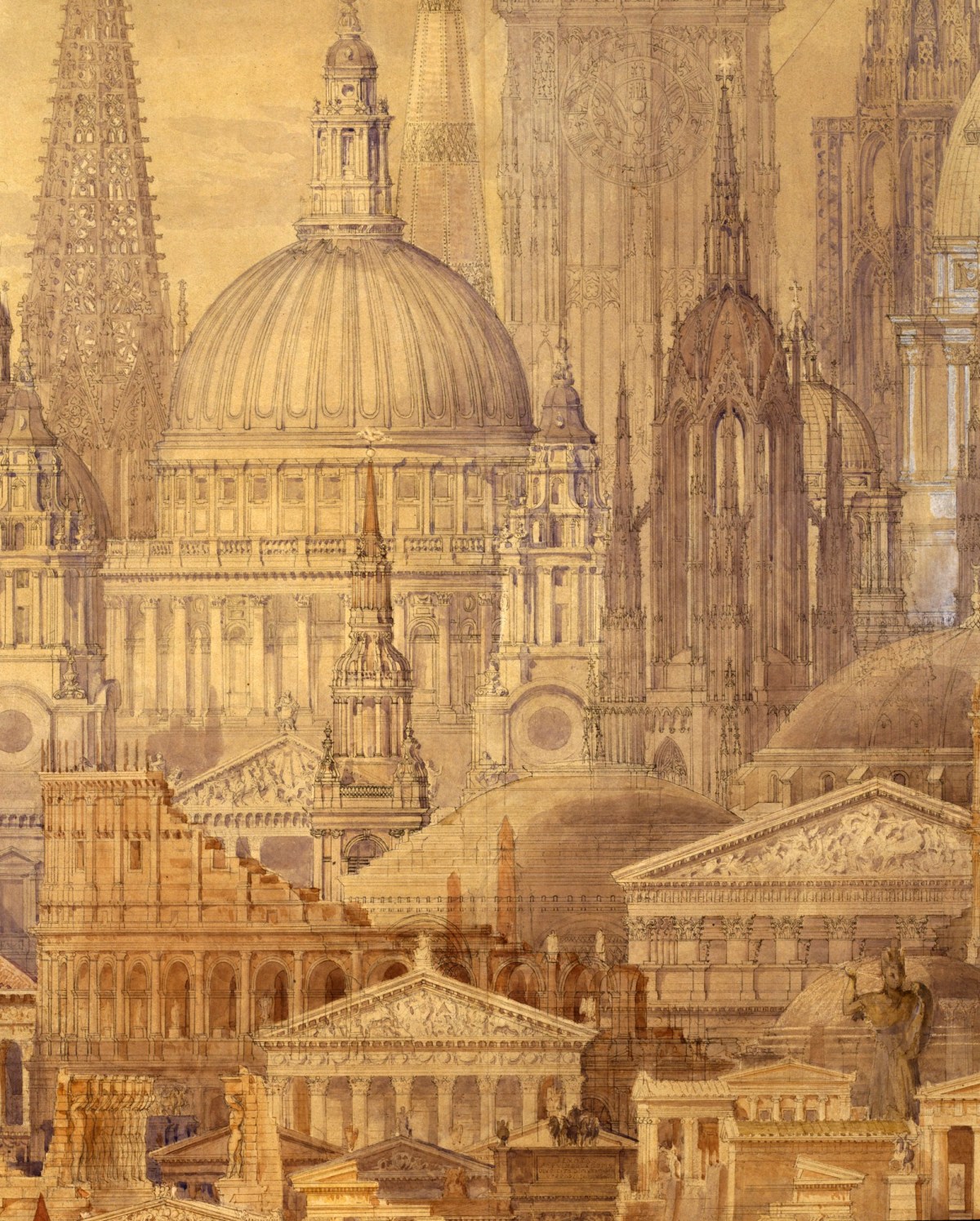
C.R. Cockerell RA, The Professor's Dream, 1848.
Pencil, pen & grey ink and watercolour, with scratched highlights. 1122 mm x 1711 mm. © Photo: Royal Academy of Arts, London.
This image is not available to download. To licence this image for commercial purposes, contact our Picture Library at picturelibrary@royalacademy.org.uk

C.R. Cockerell RA, The Professor's Dream, 1848.
Pencil, pen & grey ink and watercolour, with scratched highlights. 1122 mm x 1711 mm. © Photo: Royal Academy of Arts, London. Photographer: Prudence Cuming Associates Limited.
This image is not available to download. To licence this image for commercial purposes, contact our Picture Library at picturelibrary@royalacademy.org.uk

C.R. Cockerell RA, The Professor's Dream, 1848.
Pencil, pen & grey ink and watercolour, with scratched highlights. 1122 mm x 1711 mm. © Photo: Royal Academy of Arts, London. Photographer: Prudence Cuming Associates Limited.
This image is not available to download. To licence this image for commercial purposes, contact our Picture Library at picturelibrary@royalacademy.org.uk

C.R. Cockerell RA, The Professor's Dream, 1848.
Pencil, pen & grey ink and watercolour, with scratched highlights. 1122 mm x 1711 mm. © Photo: Royal Academy of Arts, London. Photographer: Prudence Cuming Associates Limited.
This image is not available to download. To licence this image for commercial purposes, contact our Picture Library at picturelibrary@royalacademy.org.uk

C.R. Cockerell RA, The Professor's Dream, 1848.
Pencil, pen & grey ink and watercolour, with scratched highlights. 1122 mm x 1711 mm. © Photo: Royal Academy of Arts, London. Photographer: Prudence Cuming Associates Limited.
This image is not available to download. To licence this image for commercial purposes, contact our Picture Library at picturelibrary@royalacademy.org.uk

C.R. Cockerell RA, The Professor's Dream, 1848.
Pencil, pen & grey ink and watercolour, with scratched highlights. 1122 mm x 1711 mm. © Photo: Royal Academy of Arts, London. Photographer: Prudence Cuming Associates Limited.
This image is not available to download. To licence this image for commercial purposes, contact our Picture Library at picturelibrary@royalacademy.org.uk

C.R. Cockerell RA, The Professor's Dream, 1848.
Pencil, pen & grey ink and watercolour, with scratched highlights. 1122 mm x 1711 mm. © Photo: Royal Academy of Arts, London. Photographer: Prudence Cuming Associates Limited.
This image is not available to download. To licence this image for commercial purposes, contact our Picture Library at picturelibrary@royalacademy.org.uk

C.R. Cockerell RA, The Professor's Dream, 1848.
Pencil, pen & grey ink and watercolour, with scratched highlights. 1122 mm x 1711 mm. © Photo: Royal Academy of Arts, London. Photographer: Prudence Cuming Associates Limited.
This image is not available to download. To licence this image for commercial purposes, contact our Picture Library at picturelibrary@royalacademy.org.uk

C.R. Cockerell RA, The Professor's Dream, 1848.
Pencil, pen & grey ink and watercolour, with scratched highlights. 1122 mm x 1711 mm. © Photo: Royal Academy of Arts, London. Photographer: Prudence Cuming Associates Limited.
This image is not available to download. To licence this image for commercial purposes, contact our Picture Library at picturelibrary@royalacademy.org.uk
The Professor's Dream, 1848
C.R. Cockerell RA (1788 - 1863)
RA Collection: Art
Although he built comparatively little, and only one of his buildings - the Ashmolean Museum and Taylorian Institute in Oxford - remains in the public eye, C.R. Cockerell (1788-1863) is described in Howard Colvin's A Biographical Dictionary of British Architects (3rd ed., 1995) as 'at once the most fastidious and the least pedantic of English neo-classical architects', and by a leading architectural historian of the period as quite simply 'the greatest English neo-classical architect of the 19th century' (Frank Salmon, Building on Ruins, Aldershot 2000, p.144).
Before he was 25 or had designed a single building, Cockerell was famous throughout Europe for his part in discovering in quick succession two of the most important and complete groups of ancient Greek sculpture ever found - the famous Ægina Marbles from the east pediment of the Temple of Aphaia on the Island of Ægina (these are now in the Glyptotek, Munich) and the so-called Phigaleian Marbles from the interior of the Temple of Apollo Epikourios at Bassae (or Bassai) in Arcadia, which were purchased for the British Museum in 1814. Feted in Florence and lionised in Rome for his intuitive knowledge and insight into the architecture and sculpture of the classical world, Cockerell almost abandoned the idea of becoming a practising architect to follow instead his true gifts as a 'professor of the beautiful in architecture'. Although his father, the architect S.P. Cockerell (1753-1827), persuaded him of the romantic folly of such a idea, he never lost the desire to communicate the wonder and excitement with which he had studied the surviving monuments of Greek and Roman antiquity during his early years abroad.
At the heart of Cockerell's emotional experience of the power of the antique to fire the imagination lay an extraordinary visual sensitivity to the mass and volume of the components of architecture, which for him were never mere abstract, weightless forms or quotations borrowed from the past, but acted together as a constantly renewable expression of man's innate need to create beauty on earth.
Object details
1122 mm x 1711 mm
Start exploring the RA Collection
- Explore art works, paint-smeared palettes, scribbled letters and more...
- Artists and architects have run the RA for 250 years.
Our Collection is a record of them.



